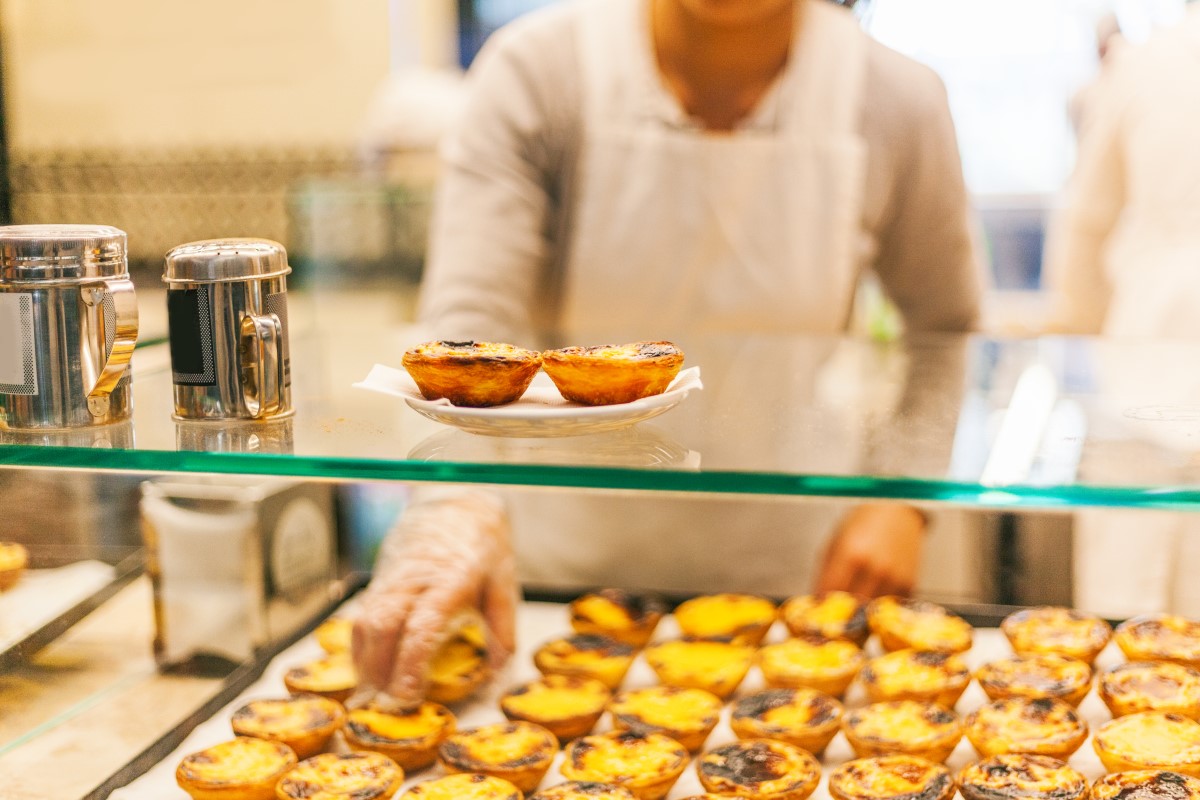Portuguese cuisine boasts a treasure trove of confections, but perhaps none have captivated the sweet-toothed hearts globally as much as the Portuguese custard tart. Known locally as ‘Pastel de Nata’, these golden, creamy delights are more than just a treat; they are a bite of history, culture, and culinary excellence. This article delves into the storied origins of these beloved tarts and walks through the meticulous process of creating the perfect Pastel de Nata.
The Origins of Portuguese Custard Tarts
The story of the Portuguese custard tart is steeped in historical intrigue, dating back to the 18th century at the Jerónimos Monastery in Belém, Lisbon. During this time, it was common for monasteries and convents to use large quantities of egg whites for starching clothes. This left them with an abundance of leftover yolks, which the clever monks used to make cakes and pastries, including the precursor to today’s Pastel de Nata. This pragmatic use of ingredients highlights a period of culinary innovation grounded in necessity.
The liberalization of Portugal in the 1820s brought about significant change, which included the closure of many religious establishments. In a bid to survive, the monks at the Jerónimos Monastery started selling their creamy tarts to a nearby sugar refinery. The recipe was eventually sold to the refinery’s owners, who in 1837 opened the Fábrica de Pastéis de Belém, a bakery that to this day sells the authentic version of these tarts under the name ‘Pastéis de Belém’. The original recipe remains a closely guarded secret, known only to a select few, ensuring these tarts’ unique taste is preserved through generations.
Beyond their historical and cultural significance, Pastéis de Nata became emblematic of Portuguese identity. As Portuguese explorers traversed the globe, they carried their gastronomy with them, embedding the tart’s image into the global culinary landscape. This widespread dissemination has led to numerous adaptations and iterations worldwide, yet the original version continues to draw tourists and locals alike to the small bakery in Belém, testament to its enduring appeal.
Crafting the Perfect Pastel de Nata
Achieving the perfect Pastel de Nata is akin to conducting an orchestra; every element must harmonize perfectly. The dance begins with the dough—crisp and flaky, it forms the foundational layer of the tart. Traditional recipes call for a puff pastry technique, where the dough is meticulously layered with butter, folded, and rolled multiple times to create hundreds of thin, delicate layers. This labor-intensive process ensures that once baked, the pastry puffs into a light, airy shell, providing a delightful contrast to the creamy filling.
Next is the custard, the heart of the tart. Preparation begins with a blend of milk, cream, and vanilla, which is gently warmed. Separately, a mixture of sugar, water, and sometimes a hint of lemon peel is brought to a boil to create a syrup. This is gradually mixed into beaten yolks, then combined with the milk mixture. The key to the custard’s rich flavor and velvety texture is in controlling the heat; it must be cooked just enough to thicken but never boil, to prevent curdling or creating an eggy flavor.
The final step in crafting a Pastel de Nata is the baking, which requires a high-temperature oven to achieve its characteristic scorched spots. These spots are not merely aesthetic; they add a slight bitterness that perfectly balances the sweetness of the custard. Achieving this without overcooking the custard or undercooking the pastry is a delicate balance and a testament to the skill of the baker. Each freshly baked tart offers a symphony of textures and flavors, encased in a humble, round pastry shell.
From the historic corridors of a Lisbon monastery to the bustling streets of cities across the world, the Portuguese custard tart has journeyed through centuries and emerged as a symbol of Portuguese culinary pride. The Pastel de Nata is more than just a dessert; it is a narrative of historical evolution, cultural pride, and gastronomic excellence. Whether enjoyed in the quaint bakeries of Lisbon or through its various international adaptations, each bite of these delightful tarts offers a taste of Portugal’s rich heritage and a timeless reminder of the simple joy good food brings.


















































